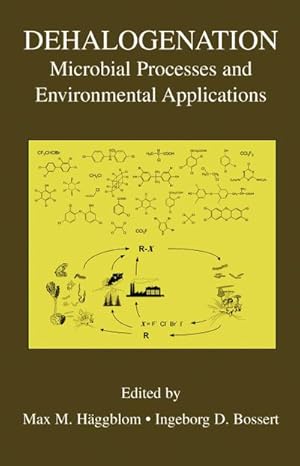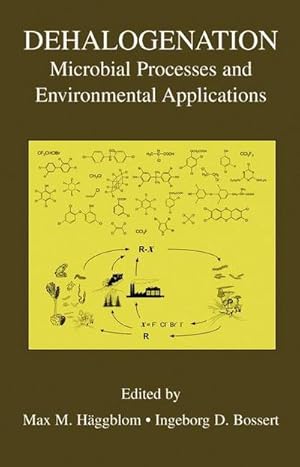dehalogenation microbial processes environmental (10 resultados)
Filtros de búsqueda
Tipo de artículo
- Todos los tipos de productos
- Libros (10)
- Revistas y publicaciones (No hay ningún otro resultado que coincida con este filtro.)
- Cómics (No hay ningún otro resultado que coincida con este filtro.)
- Partituras (No hay ningún otro resultado que coincida con este filtro.)
- Arte, grabados y pósters (No hay ningún otro resultado que coincida con este filtro.)
- Fotografías (No hay ningún otro resultado que coincida con este filtro.)
- Mapas (No hay ningún otro resultado que coincida con este filtro.)
- Manuscritos y coleccionismo de papel (No hay ningún otro resultado que coincida con este filtro.)
Condición Más información
- Nuevo (9)
- Como nuevo, Excelente o Muy bueno (1)
- Bueno o Aceptable (No hay ningún otro resultado que coincida con este filtro.)
- Regular o Pobre (No hay ningún otro resultado que coincida con este filtro.)
- Tal como se indica (No hay ningún otro resultado que coincida con este filtro.)
Encuadernación
Más atributos
- Primera edición (No hay ningún otro resultado que coincida con este filtro.)
- Firmado (No hay ningún otro resultado que coincida con este filtro.)
- Sobrecubierta (No hay ningún otro resultado que coincida con este filtro.)
- Con imágenes (4)
- No impresión bajo demanda (9)
Idioma (1)
Precio
- Cualquier precio
- Menos de EUR 20 (No hay ningún otro resultado que coincida con este filtro.)
- EUR 20 a EUR 45 (No hay ningún otro resultado que coincida con este filtro.)
- Más de EUR 45
Gastos de envío gratis
- Envío gratis a Estados Unidos de America (No hay ningún otro resultado que coincida con este filtro.)
Ubicación del vendedor
Valoración de los vendedores
-
Dehalogenation: Microbial Processes and Environmental Applications
Librería: Lucky's Textbooks, Dallas, TX, Estados Unidos de America
EUR 158,99
EUR 3,44 gastos de envío en Estados Unidos de AmericaCantidad disponible: Más de 20 disponibles
Añadir al carritoCondición: New.
-
Dehalogenation: Microbial Processes and Environmental Applications
Librería: Lucky's Textbooks, Dallas, TX, Estados Unidos de America
EUR 159,24
EUR 3,44 gastos de envío en Estados Unidos de AmericaCantidad disponible: Más de 20 disponibles
Añadir al carritoCondición: New.
-
Dehalogenation: Microbial Processes and Environmental Applications
Librería: Ria Christie Collections, Uxbridge, Reino Unido
EUR 156,68
EUR 13,59 gastos de envío desde Reino Unido a Estados Unidos de AmericaCantidad disponible: Más de 20 disponibles
Añadir al carritoCondición: New. In.
-
Dehalogenation: Microbial Processes and Environmental Applications
Librería: Ria Christie Collections, Uxbridge, Reino Unido
EUR 156,68
EUR 13,59 gastos de envío desde Reino Unido a Estados Unidos de AmericaCantidad disponible: Más de 20 disponibles
Añadir al carritoCondición: New. In.
-
Dehalogenation | Microbial Processes and Environmental Applications
Librería: preigu, Osnabrück, Alemania
EUR 141,30
EUR 70,00 gastos de envío desde Alemania a Estados Unidos de AmericaCantidad disponible: 5 disponibles
Añadir al carritoTaschenbuch. Condición: Neu. Dehalogenation | Microbial Processes and Environmental Applications | Ingeborg D. Bossert (u. a.) | Taschenbuch | xii | Englisch | 2013 | Springer US | EAN 9781475778076 | Verantwortliche Person für die EU: Springer Verlag GmbH, Tiergartenstr. 17, 69121 Heidelberg, juergen[dot]hartmann[at]springer[dot]com | Anbieter: preigu.
-
Dehalogenation : Microbial Processes and Environmental Applications
Librería: AHA-BUCH GmbH, Einbeck, Alemania
EUR 164,49
EUR 63,87 gastos de envío desde Alemania a Estados Unidos de AmericaCantidad disponible: 1 disponibles
Añadir al carritoTaschenbuch. Condición: Neu. Druck auf Anfrage Neuware - Printed after ordering - Halogenated organic compounds constitute one of the largest groups of environmental chemicals. The industrial production of new halogenated organic compounds has increased throughout the last century peaking in the 1960s, and continuing in widespread use today. Organohalides are integral to a variety of industrial applications, including use as solvents, degreasing agents, biocides, pharmaceuticals, plasticizers, hydraulic and heat transfer fluids, and intermediates for chemical synthesis, to name a few. It is important to recognize the beneficial aspects of halogenated organic compounds, as well as their potentially deleterious impact on the environment and health. Recognition ofthe adverse environmental effects ofmanytypes oforganohalide compounds has led to efforts to reduce or eliminate the most problematic ones. Although organohalide compounds are typically considered to be anthropogenic industrial compounds, they have their counterpart in several thousands of natural biogenic and geogenic organohalides, representing most classes of organic chemicals. Natural sources account for a significant portion of the global organohalogen budget. This volume authored by recognized experts in the field provides a current perspective on how both natural and synthetic organohalides are formed and degraded, and how these processes are incorporated into a global halogen cycle. The focus is on microbial processes, since these play a major role both in the production and degradation, i. e. , cycling of halogenated organic compounds inthe environment. This book is organized into five parts. Part I, Introduction, provides a global perspective on the issues of organohalides and their fate in the environment.
-
Dehalogenation : Microbial Processes and Environmental Applications
Publicado por Springer US, Springer US, 2003
ISBN 10: 1402074069 ISBN 13: 9781402074066
Idioma: Inglés
Librería: AHA-BUCH GmbH, Einbeck, Alemania
EUR 168,73
EUR 64,69 gastos de envío desde Alemania a Estados Unidos de AmericaCantidad disponible: 1 disponibles
Añadir al carritoBuch. Condición: Neu. Druck auf Anfrage Neuware - Printed after ordering - Halogenated organic compounds constitute one of the largest groups of environmental chemicals. The industrial production of new halogenated organic compounds has increased throughout the last century peaking in the 1960s, and continuing in widespread use today. Organohalides are integral to a variety of industrial applications, including use as solvents, degreasing agents, biocides, pharmaceuticals, plasticizers, hydraulic and heat transfer fluids, and intermediates for chemical synthesis, to name a few. It is important to recognize the beneficial aspects of halogenated organic compounds, as well as their potentially deleterious impact on the environment and health. Recognition ofthe adverse environmental effects ofmanytypes oforganohalide compounds has led to efforts to reduce or eliminate the most problematic ones. Although organohalide compounds are typically considered to be anthropogenic industrial compounds, they have their counterpart in several thousands of natural biogenic and geogenic organohalides, representing most classes of organic chemicals. Natural sources account for a significant portion of the global organohalogen budget. This volume authored by recognized experts in the field provides a current perspective on how both natural and synthetic organohalides are formed and degraded, and how these processes are incorporated into a global halogen cycle. The focus is on microbial processes, since these play a major role both in the production and degradation, i. e. , cycling of halogenated organic compounds inthe environment. This book is organized into five parts. Part I, Introduction, provides a global perspective on the issues of organohalides and their fate in the environment.
-
Dehalogenation: Microbial Processes and Environmental Applications
Librería: Mispah books, Redhill, SURRE, Reino Unido
EUR 207,94
EUR 28,35 gastos de envío desde Reino Unido a Estados Unidos de AmericaCantidad disponible: 1 disponibles
Añadir al carritoHardcover. Condición: Like New. Like New. book.
-
Dehalogenation: Microbial Processes and Environmental Applications
Librería: Revaluation Books, Exeter, Reino Unido
EUR 236,74
EUR 14,18 gastos de envío desde Reino Unido a Estados Unidos de AmericaCantidad disponible: 2 disponibles
Añadir al carritoPaperback. Condición: Brand New. 514 pages. 9.25x6.10x1.17 inches. In Stock.
-
Dehalogenation | Microbial Processes and Environmental Applications
Librería: preigu, Osnabrück, Alemania
EUR 141,30
EUR 70,00 gastos de envío desde Alemania a Estados Unidos de AmericaCantidad disponible: 5 disponibles
Añadir al carritoBuch. Condición: Neu. Dehalogenation | Microbial Processes and Environmental Applications | Ingeborg D. Bossert (u. a.) | Buch | xii | Englisch | 2003 | Springer US | EAN 9781402074066 | Verantwortliche Person für die EU: Springer Verlag GmbH, Tiergartenstr. 17, 69121 Heidelberg, juergen[dot]hartmann[at]springer[dot]com | Anbieter: preigu Print on Demand.







